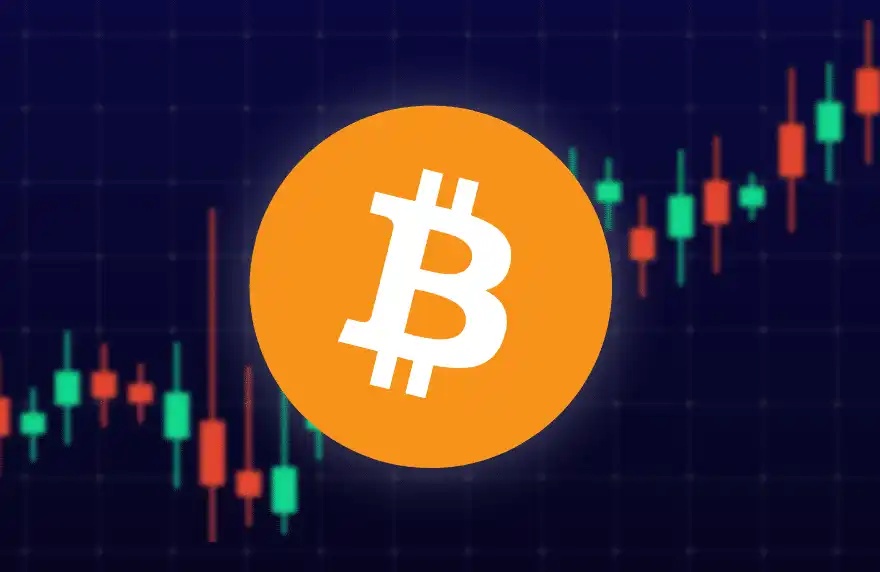Interpreting the Sei Giga Upgrade: Another Round of Public Blockchain Competition Begins
Over the past year, many global financial giants have quietly entered the crypto market, whether it is mainstream financial institutions in the United States or government platforms at the national level in countries like Japan, India, and Thailand, all have gradually turned their focus to blockchain technology and crypto assets. Behind these seemingly peripheral pilots and investments, there is actually an increasingly clear trend: the traditional financial system is launching a new round of performance inquiries into blockchain infrastructure.
Compared to the technological standards of the Internet age, the operational efficiency of most existing blockchains is still relatively low. The Ethereum mainnet processes about 15 transactions per second, with confirmation times in seconds, while the Visa network can peak at 65,000 transactions per second, and Nasdaq's matching system is capable of over 100,000 transactions per second. Google Ads' ad bidding system needs to make rapid decisions in millions of requests per second, all of which represent the high-performance requirements imposed by the real world on blockchain.
Although next-generation chains like Solana, Avalanche, and Optimism theoretically have the ability to achieve tens of thousands of transactions per second (TPS), in practice, issues such as complex contract computation, network bandwidth bottlenecks, and consensus delays will significantly reduce actual throughput. Therefore, we have seen an increasing number of proposed technical paths attempting to break through the current ceiling of blockchain scalability, such as Layer2, modular chains, parallel execution, asynchronous consensus mechanisms, etc., with various scalability solutions emerging.
Even Solana, renowned for its high performance, announced a protocol reform plan called Alpenglow at this year's consensus conference, aiming to further enhance its throughput and stability by introducing Votor and Rotor modules to replace the existing TowerBFT consensus mechanism and historical proof timestamp system. This not only reflects Solana's reassessment of its own architecture but also confirms that a new round of industry competition for on-chain performance has begun.
In this competition, Sei is one of the few public chains that has made "high-throughput infrastructure" a core strategic focus. Compared to Ethereum's progressive scaling route represented by Rollups or Solana's integrated architecture breakthrough, Sei attempts to start from the underlying logic and systematically reconstruct a Layer 1 public chain that truly possesses Web2-level responsiveness. The key milestone of this strategy is the recently launched Giga upgrade.
Why the Need for the Giga Upgrade?
Recently, Sei's newly released Sei Giga whitepaper stated that Sei is currently a decentralized, permissionless, Proof-of-Stake EVM chain supporting smart contracts written in mainstream EVM languages like Solidity and Vyper. Its compatibility with the EVM is almost equivalent to the Ethereum mainnet, with differences only in EIP-4844, PREVRANDAO, state root, block gas limit, and transaction fee mechanisms.

Sei Giga has adopted a custom EVM execution client built completely from scratch, a brand-new storage layer, and a state commitment mechanism based on an asynchronous accumulator. Thanks to these designs, Sei Giga is able to scale to Web2-level use cases, such as transaction environments that require fast confirmation (e.g., on-chain transactions), while ensuring rapid finality on a verifiable, secure public ledger.
We often talk about blockchain's TPS, but for smart contracts, a more precise metric is gas/sec. Gas is the unit in Ethereum that measures computational costs, representing the resource consumption to execute a piece of logic. The higher the supported gas/sec of a chain, the more complex contract logic and high-throughput calls it can handle.
In April last year, Paradigm's CTO published an article titled "Reth's path to 1 gigagas per second, and Beyond," introducing the concept of Gigagas. Giga translates directly to the common unit of quantity, meaning one billion or a gigabyte; and gas is the well-known gas fee.
The combination of these two words signifies one billion gas, which means that blockchain performance improvements need to aim for this target in order to achieve a user experience akin to Web2. By this standard, Ethereum is currently at the million gas/sec level, while Sei Giga's goal is 5 Gigagas/sec, a 50x improvement.

Why 5? This is a meaningful threshold – based on Google's RPC request volume, Visa's transaction load, or even AI model invocation rates, 5 Gigagas is already the basic threshold for high-load Web2 applications. The Giga upgrade is essentially an engineering foundation laid for future mainstream scenarios.
The Giga upgrade is not a one-size-fits-all approach, but rather a milestone upgrade to comprehensively restructure the three core paths of execution, consensus, and storage, transforming the chain into a performance base close to the level of traditional distributed systems.
Three Pillars of Sei's Technical Refactor
Refactoring the EVM Client to Unleash Concurrency
For the past few years, the blockchain industry has been facing an age-old problem: smart contracts run too slowly. It's like having a road where only bicycles can travel but needing to accommodate the traffic of high-speed trains. The EVM (Ethereum Virtual Machine) is the most universal "operating system" in the entire crypto world, but its early design did not prioritize speed, processing at most hundreds of transactions per second. Today, real-world applications like financial transactions, gaming, and ad bidding easily reach tens of thousands to hundreds of thousands of requests per second, a load that the EVM clearly can't handle.
The Giga upgrade introduced by Sei aims to address this scalability issue. In simple terms, Sei wants to make the EVM behave like a highway that can allow thousands of vehicles to pass through simultaneously, rather than having each vehicle wait in line.
Sei has developed a new EVM client optimized for throughput, incorporating Ahead-of-Time Compilation, transaction dependency analysis, and a parallel execution framework. By statically analyzing contract bytecode, the system can determine which transactions are not dependent on each other before execution, enabling true parallel processing.
This is analogous to vehicles on a highway no longer queuing at toll booths but being pre-identified and allowed through by AI cameras ahead. Such preemption mechanisms significantly reduce the probability of on-chain "traffic jams." Additionally, Sei has adopted a custom binary encoding format to compress block size, reduce parsing time, and make network transmission and execution scheduling more efficient.
Autobahn Multi-Lane Architecture, Sub-second Confirmation
Traditional blockchains rely on a single proposer to suggest a block during the consensus process, with other nodes voting to confirm, limiting throughput. The core idea of Autobahn, however, is "multi-lane": each validating node can propose its own block, forming independent proposal lanes, which are then periodically selected by a round leader to vote on a snapshot (cut) for consensus.
This mechanism separates transaction data dissemination from final confirmation: data availability is pre-validated by PoA signatures before consensus, requiring minimal message passing during consensus (two-round confirmation), compressing final confirmation time to less than 700 milliseconds.

In simple terms, most blockchains are like a highway with only one toll booth, allowing only one vehicle to pass through at a time. While this approach is secure, it is slow and prone to congestion. Tendermint operates on such a "single toll booth" mechanism: each round is packed by a "proposer," and others can only validate once the proposer has finished packing, proceeding step by step, resulting in low efficiency.
On the other hand, Sei's Autobahn consensus mechanism is more like a multi-lane highway with each lane having its own toll booth. Multiple toll booths can simultaneously allow different vehicles to pass through. Participants in the network can request transactions in their own "lanes" simultaneously, without having to wait for one person to finish before the next turn. This "multi-proposer" architecture significantly increases transaction processing speed while maintaining security—Sei Giga's throughput is more than 50 times higher than traditional Tendermint.
In addition, Sei did a very clever thing: it separated the two originally intertwined steps of "consensus" and "data" processing. The consensus phase no longer needs to download all transaction content; it only needs to confirm that "someone is holding the data," and can retrieve the data when needed. This is like not requiring everyone to read through thick documents before a meeting; as long as someone confirms the completeness and backup of the documents, the meeting can proceed as usual, increasing efficiency.
This mechanism enables Sei to not only meet regular transaction needs but also provide a blockchain underlying layer that is closer to traditional internet performance for complex scenarios requiring high-speed responses, such as high-frequency trading, on-chain games, and AI applications.
In internal testing, the Sei team deployed a data network with 40 validation nodes distributed across Singapore, Germany, Ohio, and Oregon, simulating real-world latency and bandwidth limitations. In this environment, the Giga upgrade achieved a sustained processing capacity of 5 Gigagas per second, with a final confirmation time remaining below 700 milliseconds, and the network continued to operate stably even with cross-region deployment.

Asynchronous State Commitment and Efficient Data Path
In the storage layer, Sei Giga introduces an asynchronous state root generation mechanism, allowing contract state updates to no longer block the main process. After transaction execution is completed, state updates can occur in the background, similar to the write-ahead log and asynchronous flushing mechanism used by large databases, ensuring data consistency while significantly reducing latency.
Furthermore, Sei has optimized the read path for the KV database structure and improved read and write efficiency through caching, preloading strategies, batch writes, and other methods. Overall, the entire storage engine is evolving towards the architecture of a distributed database system.
Beyond Technology, What Is Sei's Ecological Outlook?
Technology is just the first step; institutional design and market positioning are equally important. The performance competition in the current public chain field has long entered deep waters. The competition between Solana and Ethereum is well known, and the emerging public chain ecosystems such as Sui and Abstract catching up cannot be underestimated.
Since starting to build the EVM ecosystem in the middle of last year, the number of wallets in the Sei ecosystem has far exceeded the peak during the Cosmos architecture period, indicating that its user base and on-chain activity are gradually aligning with mainstream EVM networks. Therefore, the official announcement of the Sei Giga upgrade can be seen as a key step for this new public chain to clearly demonstrate its technological advantages and development direction in the face of fierce competition in the high-performance EVM battlefield.

This upgrade not only represents Sei's substantial breakthrough in throughput and finality but also marks its strategic transition from a "sharded chain" to a "high-frequency trading infrastructure." For developers looking to deploy more complex logic and lower-latency applications in Web3, Sei is striving to provide a landing platform closer to the Web2 performance standard.
Meanwhile, Sei's on-chain asset size is also steadily expanding. As of the time of writing, its TVL has reached $12.64 billion. As shown in the chart below, since 2025, Sei's ecosystem's TVL has been in a continuous growth trend, demonstrating developers' and the capital market's ongoing confidence in its technical upgrade path.

This growth is not only reflected in on-chain data but is also gradually permeating into the traditional financial system. In May 2025, Canary Capital submitted the S-1 filing for a Staked SEI ETF, indicating that Sei is poised to become one of the few blockchains that can be included in compliant asset portfolios. The establishment of the Sei Development Foundation in the United States has ensured governance robustness in directing development, policy alignment, and compliance promotion.
This positions Sei to become a blockchain platform truly oriented toward the traditional capital market. Against the backdrop of emerging next-generation on-chain assets such as stablecoins, RWAs, and DePINs, Sei's "high throughput + regulatory compliance + ease of access" feature has earned it the initiative in ecosystem evolution.
On July 10, the Sei Development Foundation announced that native USDC would be integrated with Circle's Cross-Chain Transfer Protocol (CCTP V2) on the Sei mainnet. This integration marks Sei further strengthening its ability as a high-throughput, regulated on-chain infrastructure, especially in demonstrating significant competitiveness in providing enterprise and developer-friendly digital dollar features and seamless cross-chain asset transfers.
According to Justin Barlow, Executive Director of the Sei Development Foundation, this integration will create new digital asset application opportunities for enterprises. Combining the stability of native USDC with Sei's performance optimization will provide institutional-grade financial support for various types of on-chain products, including DeFi, DeSci, and blockchain games. He pointed out that developers are launching new services daily on Sei, and the introduction of native USDC has injected critical financial infrastructure into its ecosystem.
The performance competition in the current public blockchain field has long entered deep waters. Solana has achieved ultra-high TPS with a single-chain architecture, but is limited in processing complex smart contracts. Ethereum is betting on Rollup to outsource complexity to Layer2, but the challenge of cross-chain communication continues to be exposed.
Sei is attempting to take a middle path: achieving underlying performance upgrades through a modular architecture, while also being compatible with the Ethereum developer ecosystem, creating a "middle-ground platform" that combines both performance and compatibility.
The Giga upgrade not only means that Sei now has the underlying capacity to support high-throughput scenarios such as AI, finance, and gaming, but also signifies the arrival of a new round of public blockchain performance leap. If the previous stage was about building around "usability," then what will be contested next is "performance sovereignty"—who can support a larger scale of assets and users will have the opportunity to define the infrastructure standard of Web3.
From proposing the concept of "Gigagas," to building the Autobahn consensus system, to completing real-world testing and soon launching the mainnet, Sei has completed the entire process of performance innovation in less than a year. This reform is far more than just "being faster"; it opens up a new dimension of imagination for the entire on-chain world. Performance is no longer incidental but the starting point of the underlying narrative. In today's world where on-chain applications are becoming increasingly complex, data is becoming denser, and users are becoming more Web2-oriented, only a public blockchain with Giga-level throughput capability can truly meet the on-chain needs of the next billion users.
Welcome to join the official BlockBeats community:
Telegram Subscription Group: https://t.me/theblockbeats
Telegram Discussion Group: https://t.me/BlockBeats_App
Official Twitter Account: https://twitter.com/BlockBeatsAsia
 Forum
Forum OPRR
OPRR Finance
Finance
 Specials
Specials
 On-chain Eco
On-chain Eco
 Entry
Entry
 Podcasts
Podcasts
 Activities
Activities








